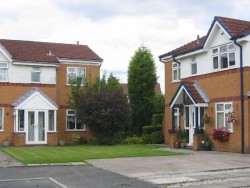 Abraham Lincoln
If given the truth, the people can be depended upon to meet any national crisis...
Abraham Lincoln
If given the truth, the people can be depended upon to meet any national crisis...
 Guildford news...
for Guildford people, brought to you by Guildford reporters - Guildford's own news service
Guildford news...
for Guildford people, brought to you by Guildford reporters - Guildford's own news service
Letter: ‘Growth Gone Mad’ Campaign Could Mean No Growth At All
Published on: 22 Jun, 2016
Updated on: 22 Jun, 2016
Property agent at Bruton Knowles
Stakeholders and developers need to find common ground on housing and development before Guildford is left stranded in the 20th century.
We are working with developers and local authorities to find solutions to the town’s ‘fast developing development crisis’.
The new Guildford Local Plan – designed to shape development until 2033 – has triggered criticisms of ‘growth gone mad’ from residents’ groups across the area.
But the borough council faces a thankless task trying to balance development imperatives given intense opposition.
However, the businesses and individuals we are speaking to recognise the new Local Plan must be flexible enough to encourage and maintain development to provide new homes – and employment – for future generations.
The council has to balance the development needed to guarantee Guildford’s future as a thriving and attractive town for new generations, without compromising its character – and its support from stakeholders in the existing communities.
But with house prices averaging £340,000, and almost ninety per cent of the borough falling within the green belt, Guildford is fast running out of options – and running the risk of being branded anti-development.
Bruton Knowles has backed nationwide calls to develop every viable brownfield site in order to ease pressure on the countryside – but they will only deliver a fraction of the new homes Guildford requires – even if the developers can be found to take on these borderline sites in the first place.
Far from being ‘growth gone mad’ Guildford is in danger of seeing no growth whatsoever.
The Local Plan is, from the developer’s point of view, all about viability.
Time is money and endless planning disputes and appeals cost time and jeopardise further investment.
That could see towns like Guildford fall further and further behind the curve – which might be just fine for the people looking to ensure development remains very strictly limited in scale and scope – but is bad news for businesses looking to move out from the capital or new families looking for a place to live.
Businesses and developers we speak to, as part of our work across the region, are saying local residents and stakeholders need to recognise that some measure of development into areas of the green belt previously held to be sacrosanct is inevitable if we are to cope with current – let alone future – levels of demand.
While the Guildford area possesses an adequate supply of high quality rural homes, smaller houses and apartments are few and far between and “affordable homes” are practically unheard of.
Planning appeals elsewhere in the country were turning on the question of whether the benefits of the new homes outweighed the harm to the green belt.
We believe we have reached the point where the answer to that question will, in many cases, be yes.
Responses to Letter: ‘Growth Gone Mad’ Campaign Could Mean No Growth At All
Leave a Comment Cancel reply
Please see our comments policy. All comments are moderated and may take time to appear. Full names, or at least initial and surname, must be given.
Click on cartoon for Dragon story: Public Asked for Views on SCC’s Proposal for Reduced Speed Limits



Recent Articles
- Notice: GTA German Filmfest – July 2
- Letter: We Need More Yellow Boxes and Enforcement
- Notice: What’s On in July at Guildford Cathedral
- Greenfield, Greenbelt Site Deemed ‘Greybelt’ by Planning Inspector
- Letter: WBC’s CIL Recommendations Are Too Little, Too Late
- Letter: Yellow Box Fines Are Just a Money-raising Opportunity for SCC
- Drivers Caught in Yellow Box Junctions at the Dennis Roundabout Paid £81k to SCC
- Residents Hit By CIL Fees Should Be Offered Full Review, Says Overview Committee
- Plans For New Guildford Preschool Rejected On Road Safety Grounds
- Expert in AI Is New Head of the University of Surrey


Recent Comments
- David Roberts on New Electric Trains Now Arriving at Guildford – 100 Years After the First One Did
- Mark Stamp on Greenfield, Greenbelt Site Deemed ‘Greybelt’ by Planning Inspector
- Simon Dickinson on Drivers Caught in Yellow Box Junctions at the Dennis Roundabout Paid £81k to SCC
- Paula Smith on Comment: What Are We To Make of the GBC Executive ‘Reshuffle’?
- Jim Allen on Drivers Caught in Yellow Box Junctions at the Dennis Roundabout Paid £81k to SCC
- Wayne Smith on Plans For New Guildford Preschool Rejected On Road Safety Grounds
Search in Site
Media Gallery
Dragon Interview: Local Artist Leaves Her Mark At One of England’s Most Historic Buildings
January 21, 2023 / No Comment / Read MoreDragon Interview: Lib Dem Planning Chair: ‘Current Policy Doesn’t Work for Local People’
January 19, 2023 / No Comment / Read MoreA3 Tunnel in Guildford ‘Necessary’ for New Homes, Says Guildford’s MP
January 10, 2023 / No Comment / Read More‘Madness’ for London Road Scheme to Go Ahead Against ‘Huge Opposition’, Says SCC Leader
January 6, 2023 / No Comment / Read MoreCouncillor’s Son Starts Campaign for More Consultation on North Street Plan
December 30, 2022 / No Comment / Read MoreCounty Council Climbs Down Over London Road Works – Further ‘Engagement’ Period Announced
December 14, 2022 / No Comment / Read MoreDragon Interview: GBC Reaction to the Government’s Expected Decision to Relax Housing Targets
December 7, 2022 / No Comment / Read MoreHow Can Our Town Centre Businesses Recover? Watch the Shop Front Debate
May 18, 2020 / No Comment / Read More







Jules Cranwell
June 23, 2016 at 9:43 pm
“No growth is not an option” said the discredited former leader Mansbridge. I questioned this at the time, and I question it now.
Growth for who? Obviously an estate agent would welcome it, but if the alternative to no growth is to adjoin Guildford and Woking to London, to form a mega-city, with no green spaces in between, is that really what residents want?
Guildford has more than pulled its weight for the national economy. Now it is time to invest where people already live, up North, the West Country, Wales etc, rather than promote further the exodus to the South-East.